On test: UK’s first electric pickup – the Maxus T90EV
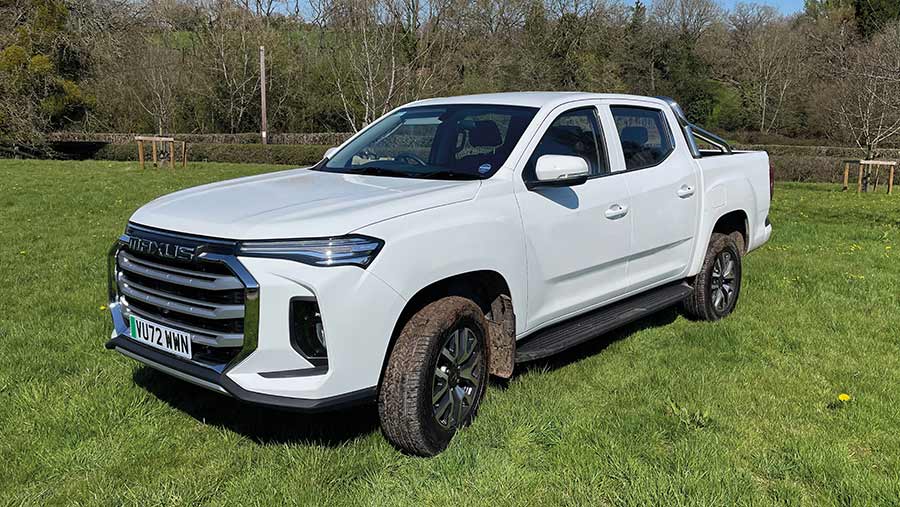 Maxus T90EV © James Andrews
Maxus T90EV © James Andrews Building an electric pickup that can thunder along rough terrain, tow heavy loads and travel a decent distance to a charge is far from straightforward.
On the one hand, stacks of batteries are required to drive all four wheels and keep the bulk moving, but the flipside is that doing so adds weight and is prohibitively expensive.
As a result, the pickup-producing big guns – Ford, Toyota, Isuzu et al – have remained tight-lipped about their electrification plans.
In fact, Toyota has gone down another route entirely, announcing a prototype hydrogen fuel-cell Hilux.
See also: First impressions: Ford’s new-look Ranger Wildtrak
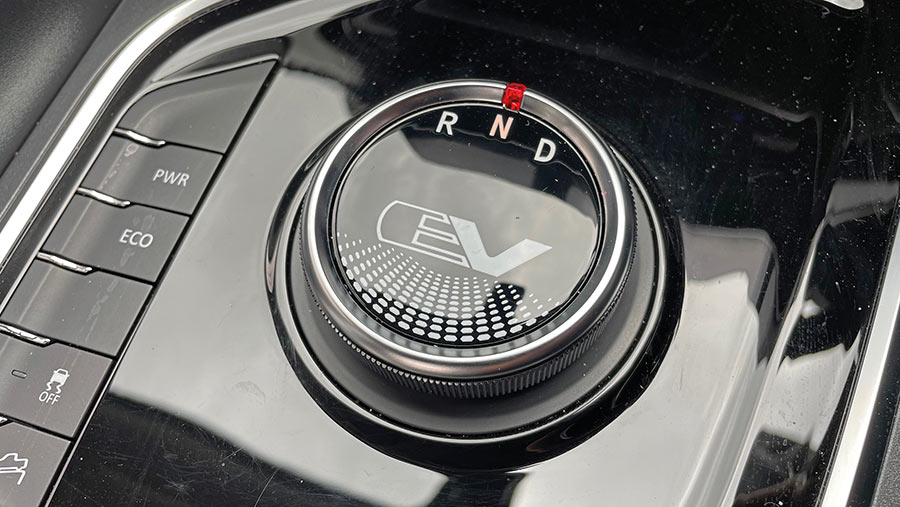
Drivetrain controls are limited to forward, neutral and reverse © James Andrews
So, for those who do hanker after a load-lugger with zero tailpipe emissions, the only option at present is the Chinese-built Maxus T90EV.
Promising a range of up to 219 miles, a 1,000kg payload and a wading depth of more than half a metre, this newcomer has several of the bases covered.
But with towing capacity pegged at just one tonne and no option of four-wheel drive, it’s got to work hard to win the affections of the agricultural community.
Maxus T90EV specs
- Motor 150kW (201hp)
- Battery pack 88.6kWh
- Claimed range Up to 219 miles
- Kerb weight 2.3t
- Braked towing capacity 1,000kg
- Price From £49,950
Adapted from diesel
Faced with the challenges listed above, Maxus has tried to keep the formula for the T90EV simple.
This meant taking its existing internal combustion model – which isn’t available in the UK – and adapting it for electric drive.
Where the engine would usually sit, Maxus has found a home for the control systems and ancillaries and, with no gearbox or transfer case to worry about, there was plenty of room to sling an 88.5kWh slab of batteries under the chassis.
That just leaves the drive motor which, for peak simplicity and efficiency, is connected directly to the rear differential.
All this means Maxus has managed to keep the kerb weight to just 2.3t, which is impressively light for an electric vehicle of this type and not much more than a diesel equivalent.
Having no drive to the front wheels will immediately rule the vehicle out for most agricultural buyers, but the firm has hinted that a four-wheel-drive version could be on the way.
If it does come, this will need a completely different drive configuration.
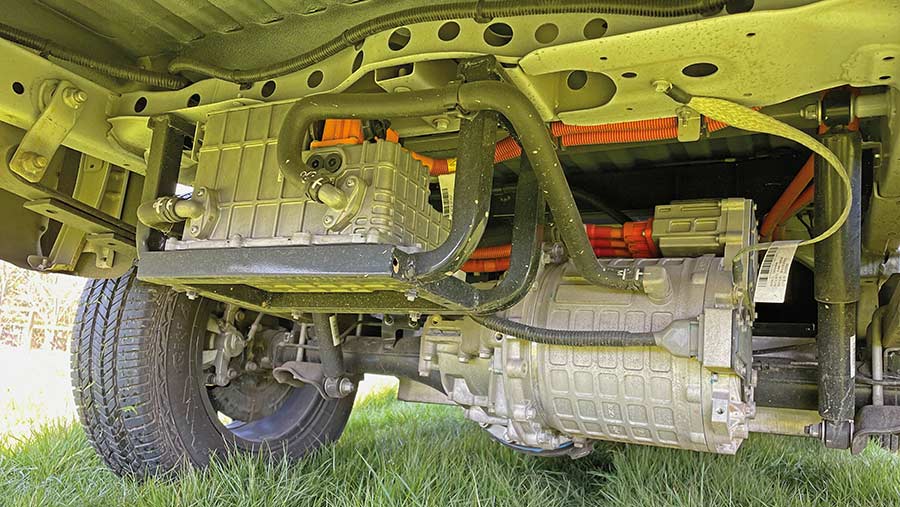
Lithium-ion batteries are slung under the chassis © James Andrews
How far can it travel to a charge?
In the blurb, the T90EV promises a range of up to 219 miles, which will be hard to achieve in the real world.
To give you the best possible chance, there’s the option of engaging an Eco mode, which slows the rate of acceleration so that you don’t chew through the charge so quickly.
This definitely takes the edge off performance, but not irritatingly so.
When we got behind the wheel, we played around with the driving modes and took it on a range of roads, from narrow lanes to A-roads and a short stint on a motorway.
Doing this we managed to travel 135 miles before the gauge was in the red and we were hunting for a fast charger.
The first ones we tried were choc-a-block – it was a Friday afternoon – but on our second attempt we tracked down a 50kW Osprey unit.
It was connected for 57mins, which cost £36.36 and added just over 100 miles to the range. So, in short, it’s no long-distance cruiser.
If we hadn’t drained the batteries so low, the charging time would likely have been quicker, as Maxus reckons it’s possible to go from 20% to 80% in 45 minutes on a DC fast charger.
On a 7kW home charger, factor in about 13 hours to fully replenish the cells.
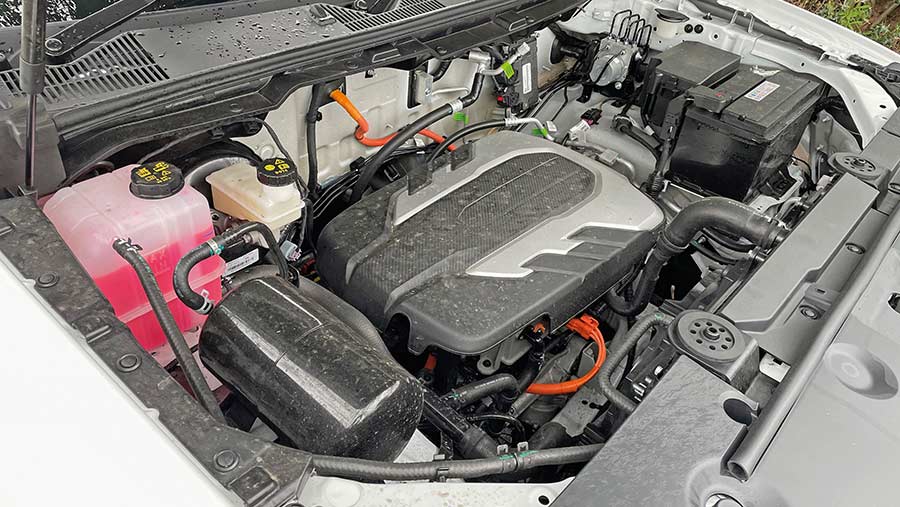
With the engine gone, the bonnet instead hides controls and ancillaries for the 150kW motor © James Andrews
What’s it like to drive?
Without any chunky gearboxes or prop shafts to turn, the uptake of drive is incredibly smooth.
Put it in power mode and the 150kW (about 201hp) motor gives it a decent turn of speed.
Like all electric vehicles, the torque is instant, so it is particularly sprightly when accelerating from a standstill.
It’s also blissfully simple to operate, with a single dial to switch between forward, neutral and reverse, a throttle pedal and a brake.
And, thanks to regenerative braking that harvests energy when decelerating, you rarely need to step on the anchors.
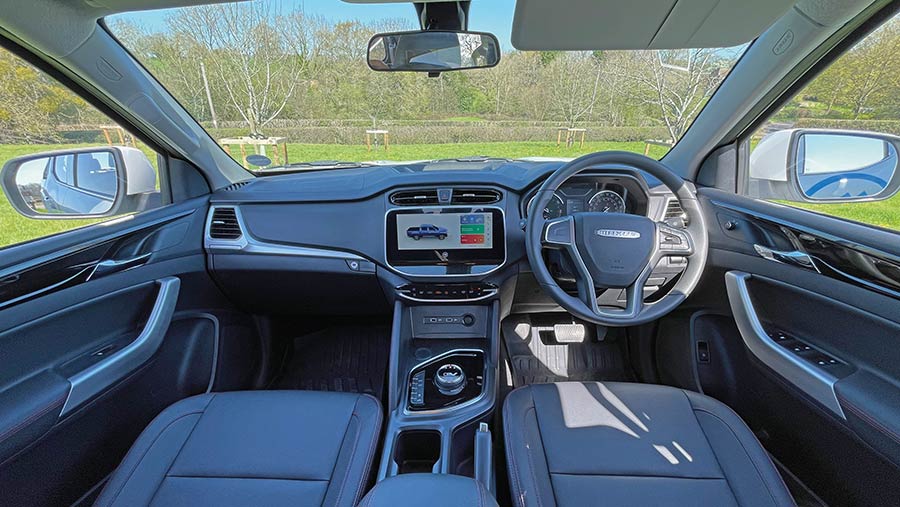
Fit and finish is surprisingly good, though not quite befitting the £50,000 price tag © James Andrews
Less pleasant is the eerie whine the vehicle emits at speeds below 25mph.
It’s there to warn pedestrians you’re approaching but, in the cabin, it sounds like there’s a ghostly air raid siren lurking behind the dash.
The indicators are also positioned on the right-hand column stalk, so there was plenty of pointless window wiping each time we took a turn.
As for the suspension, Maxus has succumbed to the challenge of tuning the springs and dampers for both carrying heavy loads and transporting occupants in comfort.
The former has clearly taken priority here as, when empty, a Jacobean horse cart would give a smoother ride.
A bit of tuning from someone knowledgeable should be able to sort this out though.
Off road, performance is roughly on par with a regular pickup running in two-wheel drive.
Our test vehicle was fitted with road tyres, so wet grass was challenging enough. But a better set of rubber would improve that, with the likely downside of carving a few more miles off the range.
The position of the motor on the rear axle also makes it worryingly vulnerable to getting clobbered if attempting to drive through a rutted gateway.
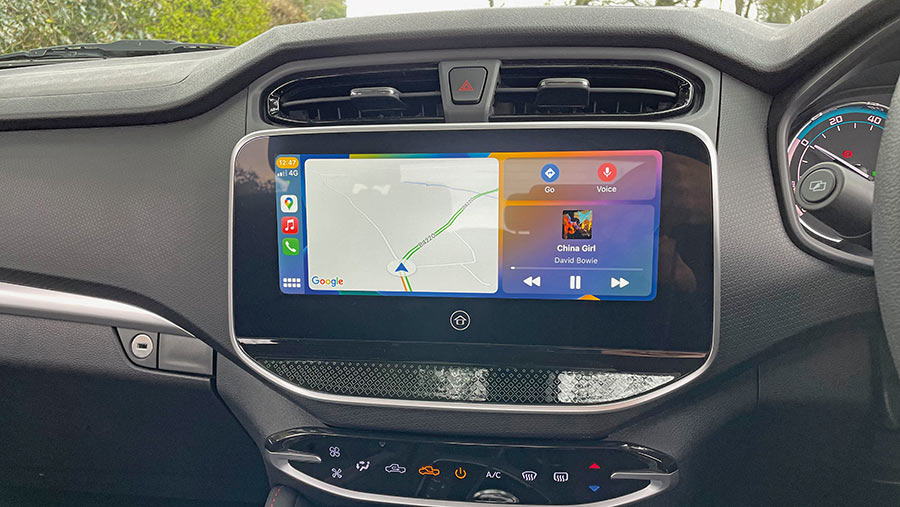
The screen is basic but redeemed by the inclusion of Apple Car Play © James Andrews
Is it well built?
If the price tag was £25,000 then we’d have no complaints about the build quality.
Panels fit well, the doors shut with a reassuring thump and, although the interior is basic, it’s well put together.
But with the expensive lump of lithium-ion batteries pushing the asking price up to £49,950, it’s not a patch on diesel rivals in this bracket.
For that sort of figure, you can get one of the new top-spec V6 Ford Rangers with a few posh options, which offers plush SUV levels of refinement and comfort.
In comparison, the Maxus’ hard pleather seats, plastic steering wheel and basic screen, which is mounted too low in the dash, is well below par.
There are some redeeming features though. Rear leg room is plentiful, it’s got a full suite of airbags, the seats have Isofix mountings and there is a reversing camera and parking sensors as standard.
In fact, almost everything is standard, so there are no expensive add-ons on the options list, other than metallic paint, which lumps £575 onto the total.
Verdict
Hats off to Maxus for being the first to bring an electric pickup to the UK.
It’s not a bad vehicle, but the fact that it lacks four-wheel drive, can only tow 1t and costs the thick end of £50,000 means it’s not going to tempt many agricultural buyers away from diesel.
Like all manufacturers, Maxus has the challenge of moving a heavy, brick-like structure through the air, without spending a fortune on weighty batteries that mess with the payload.
Simplifying the driveline was its big compromise, but that still isn’t enough to give it impressive range and decent towing performance.
So where does it fit in? As we see it, it’s best suited to businesses that need to operate in urban environments, such as landscapers, arborists or builders.
Mining is another possibility, as well as private buyers who want zero tailpipe emissions. But it’s fair to say that it is not yet a credible option for most farmers.
Likes and gripes
✔ Smooth acceleration
✔ Decent build quality
✔ Simple to use
✘ No four-wheel drive
✘ Limited range
✘ Not polished enough for price

